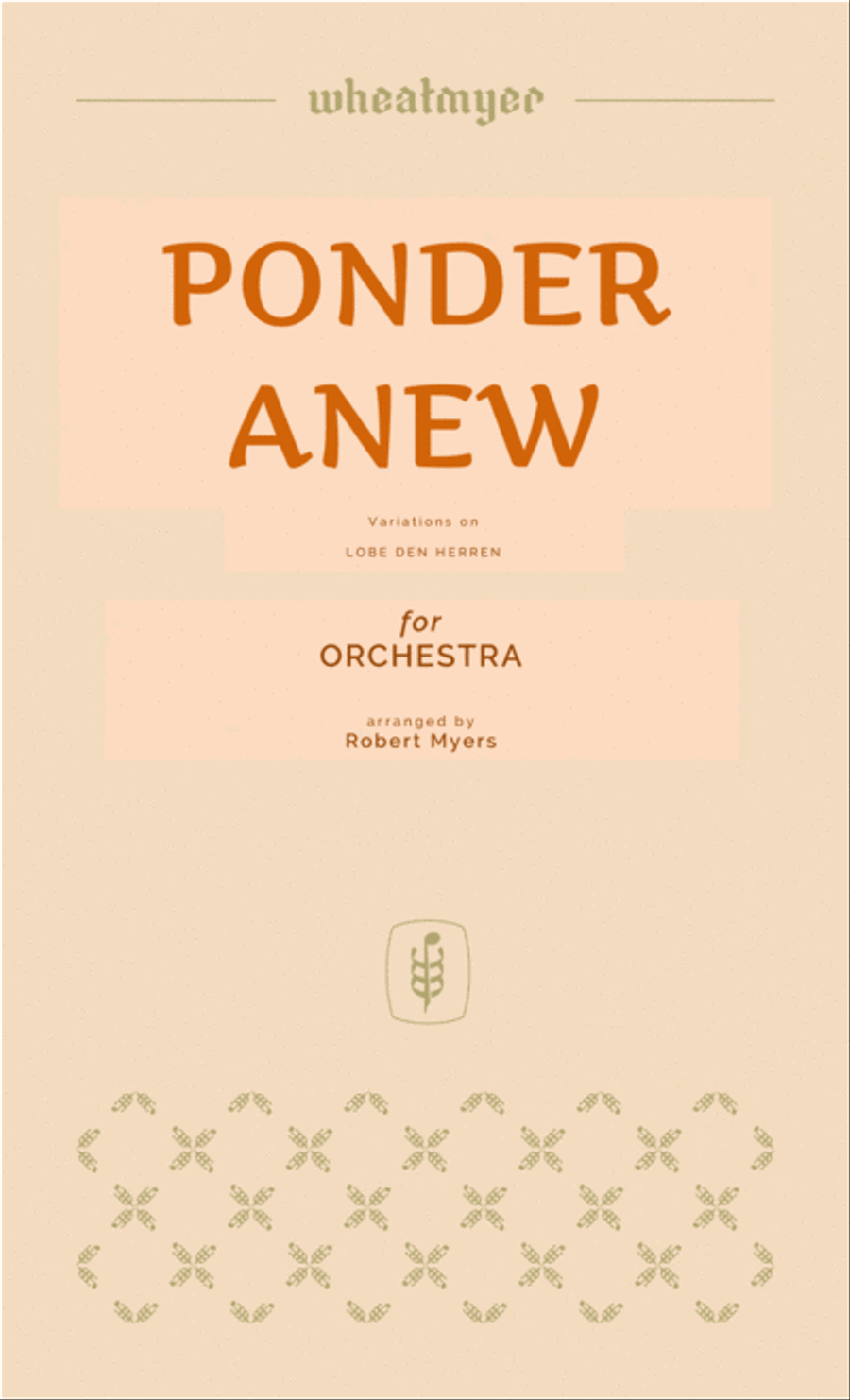Full Orchestra - Digital Download SKU: A0.976722 Composed by LOBE DEN HERREN. Arranged by Robert Myers. Christian,Contemporary,Sacred. Score and parts. 64 pages. WheatMyer Music #4808643. Published by WheatMyer Music (A0.976722). Joachim Leander's Praise to the LORD, the Almighty, as translated by Catherine Winkworth, has consistently been one of the most published hymns in the English language since the mid-20th Century. Its anonymously composed tune, LOBE DEN HERREN, almost exclusively paired with this text since the 17th Century, is also much loved. Even J.S. Bach found it suitable to feature in his 137th cantata. The title of this arrangement, Ponder Anew, as taken from the commonly used third stanza of the hymn, Ponder anew what the Almighty can do, invites one to consider afresh the attributes and works of Almighty God as one listens to this completely new setting of the tune. This arrangement for orchestra features three variations of the complete hymn tune utilizing metrical and harmonic changes to maintain focus on the tune and its text. These are bracketed via repetitions of the first five tune pitches in harmonic planing over a crescendoed pedal tone producing steadily increasing tension with unexpected resolutions of the beginning and concluding phrases. The music in not particularly difficult and should be readily playable by high school or higher level musicians. Yet, both musicians and audience will find the work interesting and enjoyable with music that reflects the majesty and mystery of its subject. Robert Myers S.D.G.INSTRUMENTATION Picc, Fl1, 2 Oboe 1, 2 Bb Cl 1, 2 + Bass Cl Bsn 1 Hn 1, 2 Tpt 1, 2, 3 Tbn 1, 2, 3 Tuba Timpani Perc. 1 (glock, crash cym, sus cym, ride cym, mark tree, claves, tam tam) Perc. 2 or Drum Set (snare, bass drum, toms (lo/mid/hi), crash cym, finger cym or triangle, ride cym, sys cym) Vln 1, 2 VlaVC DB
